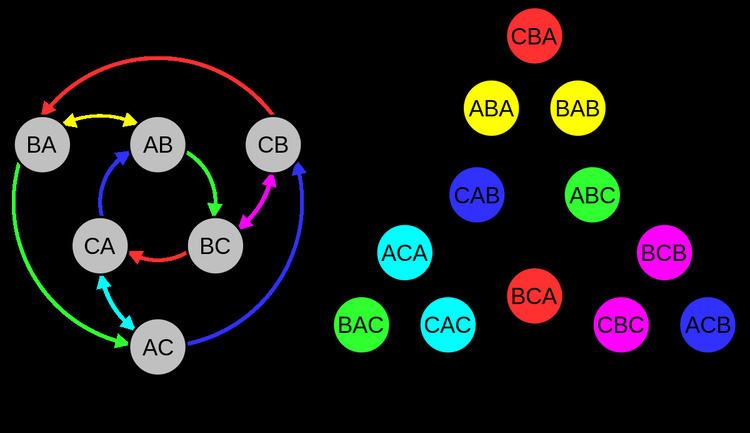 | ||
The Kautz graph
Contents
The Kautz graph
It is natural to label each such edge of
Kautz graphs are closely related to De Bruijn graphs.
Properties
In computing
The Kautz graph has been used as a network topology for connecting processors in high-performance computing and fault-tolerant computing applications: such a network is known as a Kautz network.
